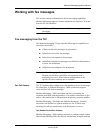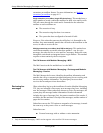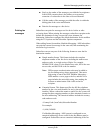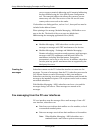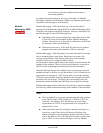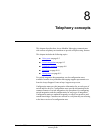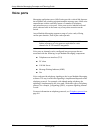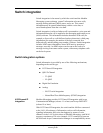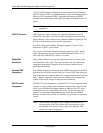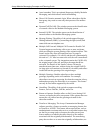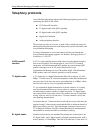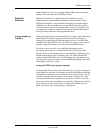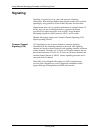
Telephony concepts
November 2004
Avaya Modular Messaging Concepts and
Planning Guide
8-3
Switch integration
Switch integration is the means by which the switch and the Modular
Messaging system exchange ‘control’ information relevant to calls,
message waiting indicator (MWI) status, and so on. This control
information may be passed inband along with the voice data, or
out-of-band separate from the voice data.
Switch integration is achieved when a call is presented to a voice port and
information about the call is supplied to the messaging application server
(MAS) software. This information includes the nature of the call (for
example, a direct call or a call deflected on busy detection), called party
information (for example, the number of the busy extension for a
deflected call), and the calling party number, if known. Switch integration
includes MWI status information, where MWI activity pertains to
messages, not calls. An MWI request can be sent as the result of a
message arriving from some remote system, without any telephone calls
on the local system.
Switch integration options
Switch information is provided by one of the following mechanisms,
depending on the switch type:
! H.323-based IP integration
! QSIG D Channel
—T1 QSIG
—E1 QSIG
! Digital Set Emulation
! Analog:
— RS-232 serial integration
— Inband Dual Tone Multifrequency (DTMF) integration
H.323-based IP
integration
Modular Messaging provides H.323-based IP integration with Avaya
Communication Manager (release 1.1 or later) and Avaya DEFINITY
(release 10 or later).
With H.323-based IP integration, the switch and the MAS are connected
to the LAN. All exchange of information, such as call information,
signaling information, and voice data happens by means of voice
channels via the LAN. In this release of Modular Messaging, each MAS
supports a maximum of 20 voice channels. H.323 connectivity between
the MAS and Avaya Communication Manager is accomplished by means



